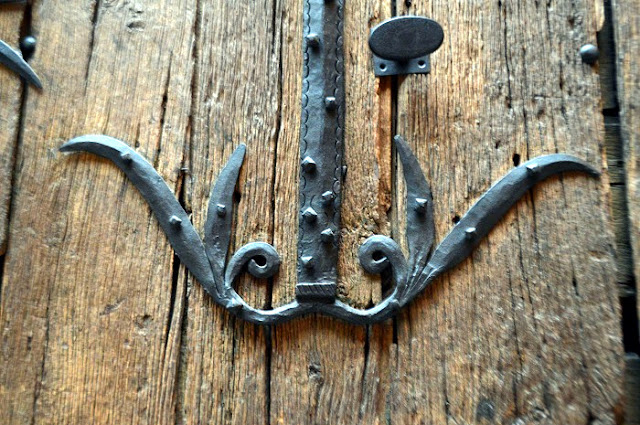A Pair of Doors
Doors should be common survivals from the
past. Should be, but aren’t. As long
as we’ve had formalised buildings, we’ve wanted ways to other people out and
our stuff safely in. Doors are the simple, reliable technology that
accomplishes this. Unfortunately, for a variety of reasons, historic doors simply
don’t seem to survive in anything like the numbers they should. Partly, it’s
because they face the weather and by the time they’re replaced, they’re more
likely to be burnt for firewood than reused in another way. I also suspect that
doors, from at least the medieval period onwards, could be prestige items and
were salvaged and reused for as long as possible before they had to be
replaced. As an analogy, I’m thinking of the repeatedly reused door jambs at
Deer Park Farms, Co Antrim – if the door posts were valuable enough to be rescued
and recycled into later houses, perhaps solid doors were too.
However you look at it,
early doors (excuse the pun) are infrequently preserved. Just as erratic in
terms of survival is decorative ironwork, which tends to corrode or be reforged
into other objects. Thus, this pair of oak doors, strengthened and decorated
with ironwork, are a peculiarly rare survival.
These are from Gannat
in central France and date to the 13th century. Interestingly, these were
created at an important juncture as from the end of the previous century new
fashions in decorative ironwork in the Auvergne were emerging. These were characterised
by a use of the Greek honeysuckle and palmette forms, repeated in geometric
forms. However, these examples also display chiselled and scored decoration, a
hallmark of earlier ironwork in the region.
Part of the reason this
set of doors has survived so long is precisely that they were recycled and rehung.
In particular, the marks caused by the later addition of an external door
handle and a keyhole indicate that the pair were rehung upside down.






Comments
Post a Comment